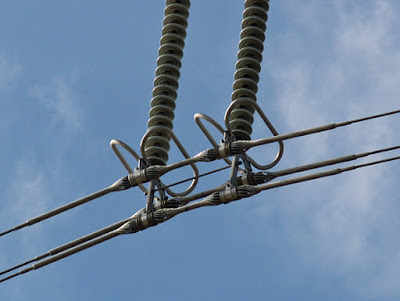Efficiency is a factor that defines the performance of any device or equipment. Generally, it is specified as the ratio of the output obtained to the input fed to a device. It suggests to what extent a device is utilized.

In an overhead transmission line (OHTL) insulator, a number of insulator discs are arranged in a string in accordance with the operating voltage. The lowest disc or unit which is i near the power conductor experiences maximum stress or it is fully utilized. But, as we move towards the top most unit, the units are not heavily stressed and hence not fully utilized. Hence, the measure of utilization of the string gives string efficiency. Definition The string efficiency of an over head transmission line insulator is defined as the ratio of the voltage across the complete string to that of the product the number of units and the voltage across the unit nearest to the power conductor.
It is given as,
η=Voltage across the string/{ n x Voltage across the unit nearest to the conductor}
n= No.of units in the string.
It can also be defined as the ratio of the spark-over voltage of the complete string to that of the product of the number of discs and the spark-over voltage of one disc.
The significance of String efficiency
String efficiency is an important factor as it suggests the overall potential distribution along the string of insulators. For obtaining uniform voltage distribution, the string efficiency should be as good as possible. if the distribution of voltage is uniform, then each disc will be fully and equally utilized. This also implies that the discs in the string will experience equal stress so that the life of the string is enhanced.
In the ideal case, the string efficiency is maximum and the voltage distribution across each disc will be exactly the same. But in real time situation, it is impossible to achieve 100% string efficiency. Efforts’ can be made to improve string efficiency. If the value of ‘V (i.e., the ratio of mutual capacitance to self-capacitance) is decreased then the potential distribution is more uniform and string efficiency is increased. The non-uniformity in voltage distribution increases with the increase in the number of discs in the string. Therefore, the shorter string has more efficiency than the larger one.